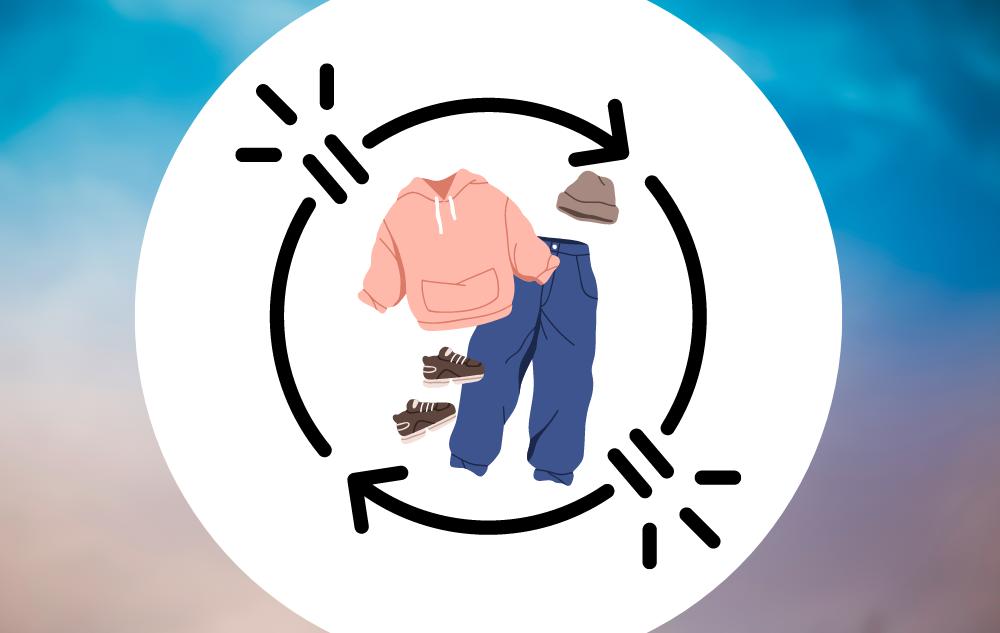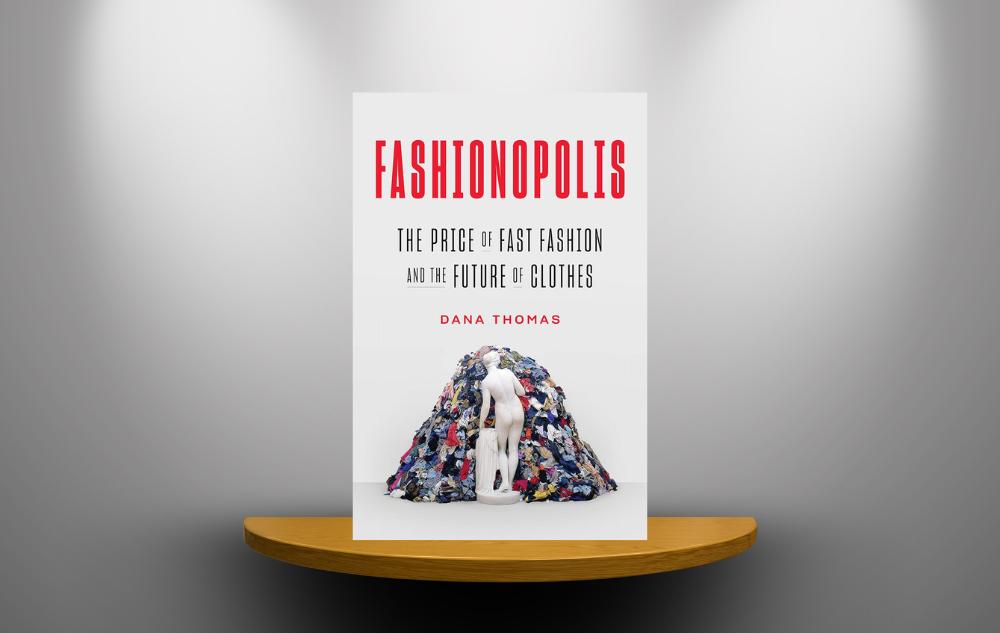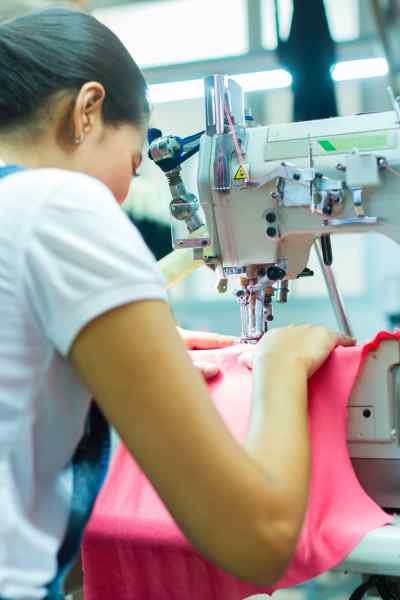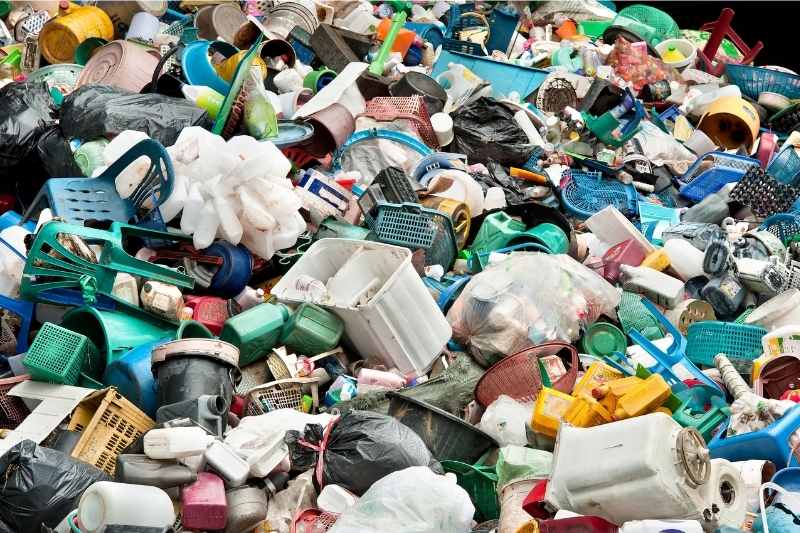Fast fashion makes large profits for big brands while exploiting people and places, driving thoughtless consumerism, and harming our planet.
Fast fashion, the term that describes the production cycle of low-cost, low-quality clothing to meet the demand of rotating trends, has exploded with a rise in consumerism and the help of social media. Big brands churn our new collections of clothing every week, fueling trend demands and adding to the vicious cycle. Unfortunately, fast fashion has a devastating effect on our planet. It’s our responsibility to break the cycle and push back on big brands.
How often do you find yourself shopping for the next addition to your wardrobe? Americans buy five times more clothing than they did in 1980. The average American buys 68 garments per year and wears them about 7-8 times before disposing them. Some garments are worn even less: they are flimsy, low-quality items that don’t hold up to normal washing and wearing. Unfortunately, your purchases of fast fashion are funding this destructive force in our world.
When did fast fashion take over?
Fast fashion began in the 1990s and precipitated massive changes in the industry. Up until the 1980s, the United States produced over 60% of the garments Americans purchased. Today, only 3% is produced in America.
As Dana Thomas shares in her book Fashionopolis, “Generally, if a fast-fashion shirt costs $10, the person who made it got ten cents. The factory owners get paid a bit of the remaining $9.90. But the biggest slice of the $9.90 goes to the brand as profits.” These clothes are highly marketed to entice buyers to purchase more clothing for less. Thomas asserts that the industry has become like a Vegas casino: “You spend freely, recklessly even, and though you’ve probably been rooked, you feel like you’ve won.”
It is time we took back our respect for fashion and stop the vicious fast fashion cycle.
Thomas asserts: “Fast fashion swept away a certain kind of common sense know-how and respect surrounding our clothing, from how to recognize a good buy and shop for quality to how to sew on a button and mend a hole in a favorite pair of jeans.”
“Between 2000 and 2014 the price of most goods – everything from bread to cell phones – increased by about 50%. If something cost $100 in 2000 it cost $150 in 2014. But, thanks to the cost-cutting all along the fashion supply chain, clothing prices actually dropped. So consumers bought more clothes. Wore them less. Grew bored with them faster. And got rid of them faster. Throwaway clothes became the norm.”
From Fashionopolis: The Secrets Behind the Clothes We Wear by Dana Thomas
The true price of fast fashion
The clothing business is an approximately 2 trillion dollar business that employs hundreds of millions of people around the world. It is the most labor-intensive industry, with 1 out of 6 people in the world working in it. The impact of the fast fashion industry is significant.
Fast fashion caused significant job losses in the United States.
Garment making jobs were moved off-shore, as work abroad was cheaper. This impacted local economies. The US garment industry alone lost over 1 million jobs over 15 years, about 75% of the workforce. The same happened in many other countries as apparel-making moved to poorer countries who were willing to produce textiles for less.
Workers are exploited, working in dangerous conditions for poverty wages. Only 2% of all garment workers earn a living wage.
New work opportunities became available offshore, creating jobs in third-world countries that wouldn’t otherwise be there. Unfortunately, there are few labor protections, and most workers accept paltry pay and dangerous factory conditions.
Garment factories also face fierce competition to win brand orders. Once a brand agrees to an order, the factory funds the upfront cost of the fabric and all manufacturing costs. Once produced, the garments are shipped to the brand, who may refuse to reimburse the factory for the items if the shipment is late or arrives not as expected. Factories are then left in a desperate position, having already funded the production of a garment that the buyer no longer wants. The brand holds all the power – and takes the majority of the profits.
The waste produced by fast fashion cycles has a devastating effect on our planet.
Unwanted clothing creates massive waste. Giving unwanted garments to charity is one way to avoid the landfill. But unfortunately, only 10-20% of garments donated end up reused or resold. The majority of unwanted garments are shipped to poorer countries for resale markets (which damages that country’s local fashion markets). Sadly, the majority of secondhand clothing that is shipped abroad end up unsold. 80% of the people working in these third-market resale circles don’t make a profit. And to make matters worse, that country assumes the burden of disposing of this unwanted clothing.
But it’s not only unwanted clothes that take a toll on our planet. The garment production industry has a huge environmental impact, using fast amounts of natural resources such as water, energy, and chemicals. Surrounding waterways become polluted with chemical runoff. The World Bank estimates that the fashion sector is responsible for nearly 20% of all industrial water pollution annually.
Consumers are consistently pressured to buy, perpetuating the cycle.
Consumers are increasingly marketed to buy more and buy cheap. Caught in the cycle, they buy larger quantities of low quality clothing, increasing their debt.
While almost everyone else is paying the price for fast fashion, brand executives are making millions a year. Some of them are the most wealthy people on our planet.
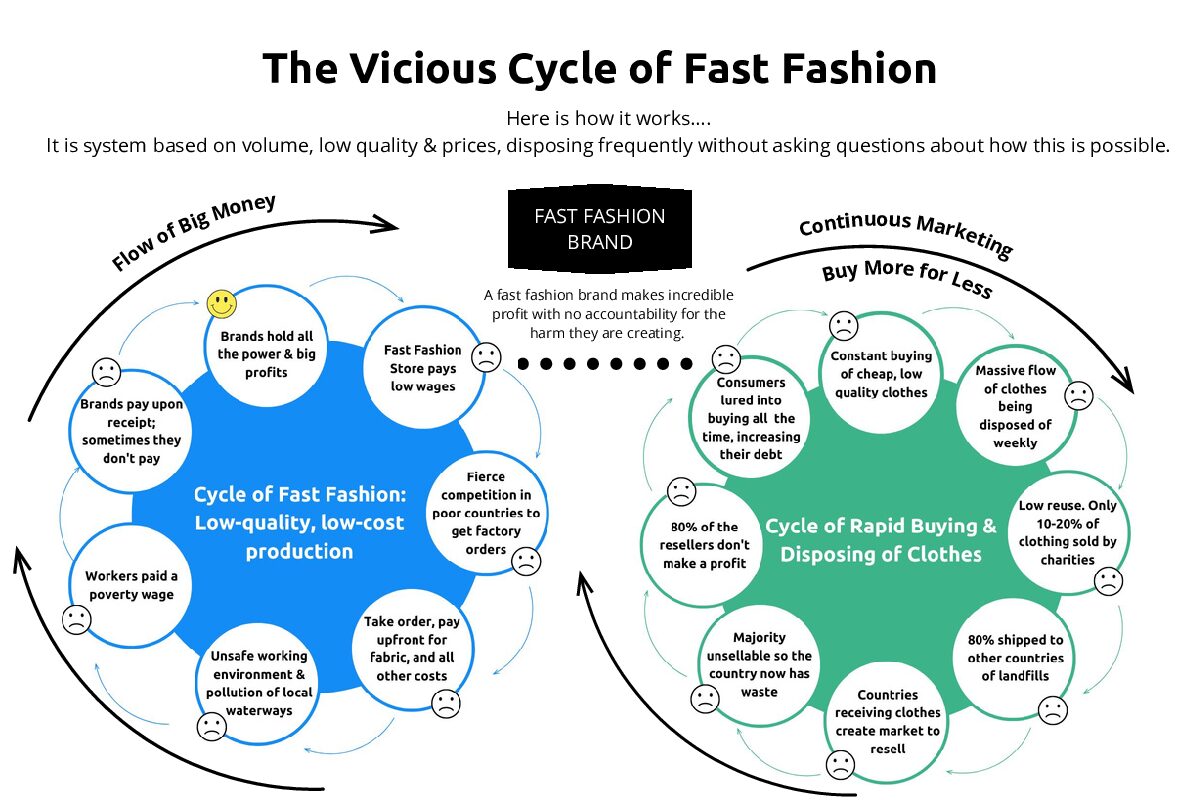
What can we do about it? How do we break the cycle of fast fashion?
Fortunately, there is a lot of power in consumer decision-making that can break the fast fashion cycle. Here are some ways to get started:
Assess the current state of your wardrobe.
Take a good hard look at your closet. We love Elizabeth L. Cline’s practical approach, detailed in her book The Conscious Closet. She recommends starting with a wardrobe impact inventory: understanding the number of items in your wardrobe, percentage worn, components, fabrics, and country of origin. Then, inform yourself about the environmental impacts of fast fashion. Cline extols sustainable fashion and the art of less & more, shares tips on how to make your garments last, and encourages readers to be a part of the change. Elizabeth’s book is a practical guide about how to say goodbye to fast fashion.
Kick the fast fashion habit by shopping your closet or thrifting.
You can change your buying patterns while still looking fabulous! First, avoid buying new from fast fashion brands. If the deal feels too good to be true, it probably is.
Then, take a consumer vacation by shopping your closet. Use different apparel and accessory pieces you already own to create your own unique look. Go window-shopping to see how you might style the clothes you already own in a new way.
If you must make a purchase, consider shopping secondhand. Thrifting is a guilt-free way to enhance your closet and give a gently-used item a second life. Plus, half the fun is hunting for a treasure!
Choose sustainable brands.
More and more companies are making changes to be more sustainable. They are changing production methods to reduce the impact on the environment and using fair labor in safe working conditions. But be careful of greenwashing, where brands claim that they are sustainable when they are, in fact, not.
Paying more for a staple item from a sustainable brand may be worth the cost upfront. These garments are more likely to last longer and are produced with the planet in mind.
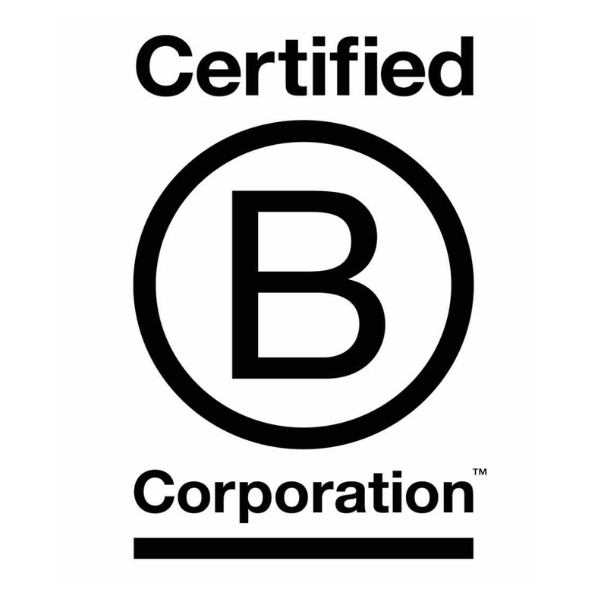
Finding sustainable brands can be a challenge, but there are tools to help!
BLab is a non-profit who is committed to identifying brands committed to environmental and social good. Their list of certified B Corporations make it easier to find sustainable brands to support. We are also fans of Good on You, which rates fashion brands to assist consumers.
Learn more about how to maximize your impact with our blog Your Dollar is Powerful. Be a Conscious Consumer.
Commit to new fashion habits by joyfully tracking them on our One Planet Life app.
The One Planet Life app can help you quantify how your buying choices are helping the planet. Here are some of the Joyful Changes you can track in our app:
- No buy clothes/shoes days
- Shop your closet days
- Repair clothing instead of buying new
- Buy secondhand clothing
- Buy clothing from a sustainable brand
- Use clothing rental service for work garments, vacation garments, special event garments, or maternity clothing
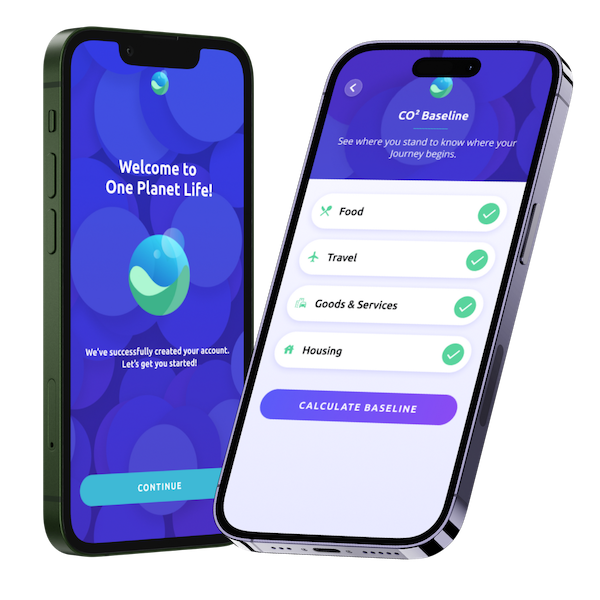
Join One Planet Life in breaking the vicious cycle of fast fashion. We can support more sustainable and ethical fashion practices and still look fabulous!

